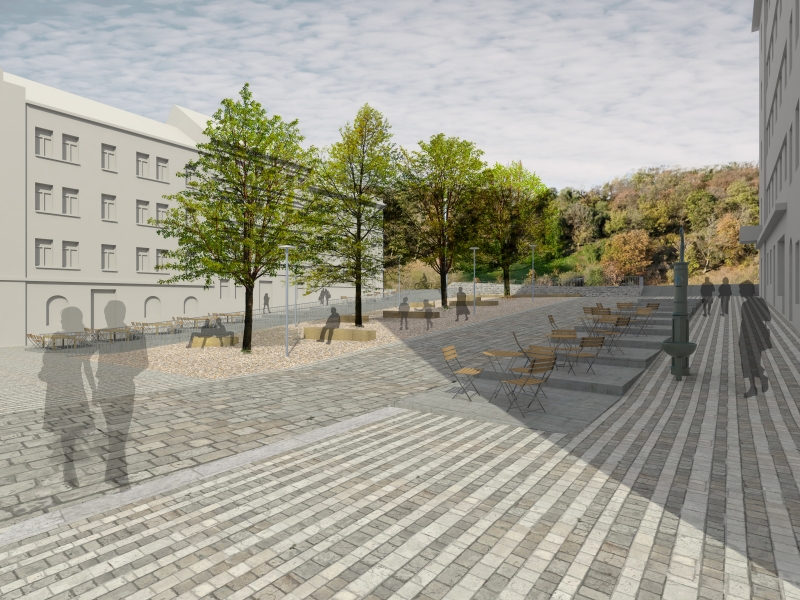Among Prague’s landmark and infrastructure revitalization projects, Tachovské náměstí above the Žižkov Tunnel in Prague 3 represents a completely successful renovation operation. Renovations to the long-neglected Tachovské náměstí were completed earlier this year, with new grass landscaping and a public staircase, along with other restored elements reminiscent of its historic past. The new area includes modernized amenities such as trees, which are already in bloom, benches, flowerbeds, and an improved roadway for cyclists and pedestrians wishing to travel to the adjacent Vítkov Hill.
The Žižkov Tunnel, which connects Prague’s Žižkov and Karlín districts and is located under Vítkov Hill, has also been renovated, thanks to the design of Vít Šimek of Atelier HRA. The intrinsic concept of his design is based on the idea of reflected light, created by mirrored walls, made of polished stainless steel, along the tunnel exit. The mirrored walls add more light, space, and dynamism to the corridor, which otherwise would have appeared too narrow, and the work was created so that both those coming from Karlín and those coming from the opposite direction can interact with it in the same way.
Restoration work on the square began in mid-2022, costing approximately 77 million kroner. The renovation project involved replacing impervious terrain and outdated structures, including former public toilets and a blacksmith’s workshop, with paved areas, benches, flowers, and trees that provide residents and visitors with a welcoming environment to relax and socialize.
The project was widely appreciated, and the words of Prague’s deputy mayor Zdeněk Hřib were proof of that. Indeed, he called the transformation of the area “incredible,” noting how the flowering trees help to create a wonderful oasis of relaxation.
The project, led by architect Štěpán Valouch of OVA Studio, aimed not only to renew the area but also to restore the historic character of the square by incorporating modern amenities to enhance its functionality and charm. Valouch’s design, therefore, pays homage to the square’s past, incorporating modern elements to make it functional, but leaving a trace of the place’s history, namely a market where goods were weighed according to the city’s official measurements.
Practical considerations were also addressed in the redesign. Indeed, a new ramp provides better access to the adjacent Vítkov bicycle path, promoting sustainable modes of transportation and improving connectivity within the community. Additionally, a renovated pump previously located in front of the U Slovanská lípy pub now serves as a source of drinking water.
In conclusion, the revitalization projects in Tachovské náměstí and Žižkov represent an excellent example of how it is possible to combine the restoration of historical heritage with the introduction of modern elements to improve the quality of urban life. Through the efforts of architects, planners, and local authorities, these areas have been transformed into welcoming, functional, and aesthetically pleasing spaces that meet the needs of residents and visitors while promoting environmental sustainability and community connectivity. The success of such projects enriches Prague’s urban fabric and also serves as inspiration for future urban regeneration initiatives.
Sources: https://www.expats.cz/





